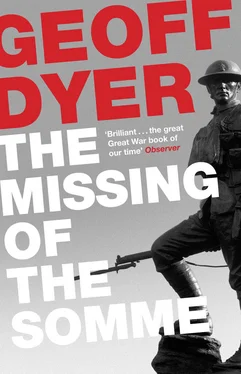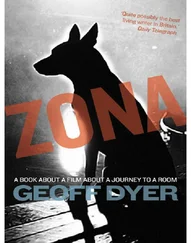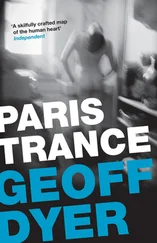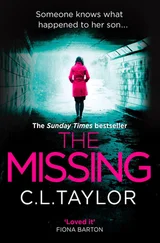Geoff Dyer - The Missing of the Somme
Здесь есть возможность читать онлайн «Geoff Dyer - The Missing of the Somme» весь текст электронной книги совершенно бесплатно (целиком полную версию без сокращений). В некоторых случаях можно слушать аудио, скачать через торрент в формате fb2 и присутствует краткое содержание. Год выпуска: 2012, Издательство: Canongate Books, Жанр: Биографии и Мемуары, Публицистика, Критика, на английском языке. Описание произведения, (предисловие) а так же отзывы посетителей доступны на портале библиотеки ЛибКат.
- Название:The Missing of the Somme
- Автор:
- Издательство:Canongate Books
- Жанр:
- Год:2012
- ISBN:нет данных
- Рейтинг книги:3 / 5. Голосов: 1
-
Избранное:Добавить в избранное
- Отзывы:
-
Ваша оценка:
- 60
- 1
- 2
- 3
- 4
- 5
The Missing of the Somme: краткое содержание, описание и аннотация
Предлагаем к чтению аннотацию, описание, краткое содержание или предисловие (зависит от того, что написал сам автор книги «The Missing of the Somme»). Если вы не нашли необходимую информацию о книге — напишите в комментариях, мы постараемся отыскать её.
The Missing of the Somme — читать онлайн бесплатно полную книгу (весь текст) целиком
Ниже представлен текст книги, разбитый по страницам. Система сохранения места последней прочитанной страницы, позволяет с удобством читать онлайн бесплатно книгу «The Missing of the Somme», без необходимости каждый раз заново искать на чём Вы остановились. Поставьте закладку, и сможете в любой момент перейти на страницу, на которой закончили чтение.
Интервал:
Закладка:
special teams spent months at work levelling the terrain with dynamite, destroying the very stones, filling in the village pond and, finally, diverting the course of the river. . To make assurance doubly sure, the cemetery was emptied of its dead who might have been a perpetual reminder that once something existed in this place.
The passion for Remembrance — for building memorials, for recording the names of the dead — can be better understood in the wake of such destruction. Solace and comfort can be found in the capacity of ruins to survive the human tragedies they result from and record. But the destruction first witnessed in the Great War was so thorough that it seemed capable of obliterating all trace of itself. Men were blown to pieces or disappeared into mud, villages were lost without trace. All that would remain, it seemed, would be ‘a sponge, an infernal swamp for souls in pain’.
Soldiers returned from this zone of obliteration to an England virtually untouched by war. The Second World War left London and other major cities cratered and ravaged by the Blitz. After the Great War the architecture and landscape of England were unchanged except, here and there, for relatively slight damage from air raids. Apart from the injured, there was no sign of a war having taken place. Written in October 1918, Cynthia Asquith’s words were prescient:
I am beginning to rub my eyes at the prospect of peace. I think it will require more courage than anything that has gone before. . one will at last fully recognize that the dead are not only dead for the duration of the war.
It was as if a terrible plague had swept invisibly through the male population of the country — except there were no bodies, no signs of burial, no cemeteries even. Ten per cent of the males under forty-five had simply disappeared.
Life went on. ‘We didn’t really miss the men who didn’t come back,’ a native of Akenfield remarks. ‘The village stayed the same.’ An accurate analysis, it turns out, of the demographic consequences of the war; in the 1921 national census the age distribution curve compared with 1901 and 1966 ‘reveals hardly the slightest difference’. In the cold light of population statistics, in other words, the losses of the terrible battles were soon made good.
The problem, then, was to find a way of making manifest the memory of those who were missing — who did not figure in statistics like these. How to make visible this invisible loss? How to do the work of ruins? How to inscribe the story of what had happened on a death-haunted landscape which was, apparently, unmarked by the greatest tragedy to have affected the nation? Again we come back to Owen’s ‘Anthem’, which, by cataloguing the ways in which the dead will not be remembered — ‘no prayers nor bells’ — etches their memory in the dusk of the shires.
In a fragment omitted from the published version of Minima Moralia Adorno observed that ‘what the Nazis did to the Jews was unspeakable: language had no word for it’. And yet, ‘a term needed to be found if the victims. . were to be spared the curse of having no thoughts turned unto them. So in English the concept of genocide was coined.’ As a result, Adorno continues, ‘the unspeakable was made, for the sake of protest, commensurable’.
What happened in the Great War remained incommensurable. ‘Horror’ and ‘slaughter’ have become popular terms of shorthand response; at a higher level of emotional and verbal refinement there is Owen’s ‘pity’. Successive waves of rhetorical elaboration could never contain the experience in which they originated — this, paradoxically, is what gives the poetry its appeal : the cry of the poems is unanswerable. This is what was heard in the two minutes’ silence of Armistice Day and is heard still in the perpetual silence of the cemeteries. Remembrance is the means by which the incommensurability of the Great War is acknowledged and expressed.
Parts of the Western Front, like the area of the Somme, had been so completely devastated that the French government contemplated making them into national forests. Soon after the armistice, however, peasants began drifting back to their old farms where they were granted three years’ rent-free tenancy. Battlefields were levelled and cleared of war debris and dead; houses were rebuilt. Stephen Graham’s The Challenge of the Dead offers an eyewitness account of the early stages of the Western Front’s transition from war to peace. Again and again in the course of his travels he comes across parties of soldiers exhuming bodies from the earth. Amidst this harvest of death the first signs of returning life serve only to transform a featureless quagmire to a blighted wilderness, a landscape at once pre- and post-historic:
. . trees not quite dead but sprouting green from black trunks and then to blasted trees dead to the core. After a mile or so farmhouses and cultivation cease and one enters the terrible battle area of Passchendaele, all pits, all tangled with corroded wire — but now as if it were in tumultuous conflict with Nature. . The stagnancy has not dried up, but festers still in black rot below the rushes. Double shell-holes, treble shell-holes, charred ground, great pits, bashed-in dug-outs, all overgrown with the highest of wild flowers. .
In 1917 Masefield wrote letter after letter to his wife, cataloguing the devastation he was witnessing in the area of the Somme. Even while surrounded by destruction on an unimaginable scale, he predicted that ‘when the trenches are filled in, when the plough has gone over them, the ground will not long keep the look of war’. By the late twenties he was being proved right. When R. H. Mottram went back twenty years after the end of the war, he found ‘all semblance gone, irretrievably gone’. If at first the fear had been that the area was beyond renovation, now veterans became worried that insufficient traces would remain of what had taken place. In 1930 Vera Brittain wrote:
Nature herself conspires with time to cheat our recollections; grass has grown over the shell-holes at Ypres, and the cultivated meadows of industrious peasants have replaced the hut-scarred fields of Etaples and Camiers where once I nursed the wounded in their great retreat of 1918.
Carl Sandburg’s poem ‘Grass’ transforms this vast capacity for rejuvenation from a source of anxiety to one of comfort.
And pile them high at Ypres and Verdun.
Shovel them under and let me work.
Two years, ten years, and passengers ask the conductor:
What place is this?
Where are we now?
I am the grass.
Let me work.
Fields stretch away yellow and green under a perfect sky. I walk along a footpath to a small cemetery on the top of a low hill. At the edge of the path is a small pile of shells. Dense with rust, they look like relics of the Bronze or Iron Age, from a time before there were cities or books.
Even the grass cannot work hard enough to keep these traces of the past buried for good. ‘A farmer on the Western Front cannot prune a tree without ruining his saw,’ claims a character in Ondaatje’s The English Patient , ‘because of the amount of shrapnel shot into it during the [Great] War.’ Each year’s ploughing brings new bodies to the surface. Each year, writes David Constantine,
the ground breaks out in an eczema of iron,
Lead and the bones of men and the poor horses. .
The Missing of the Somme
Three p.m. The sun is blazing. The last mist melted hours ago. Trees gather the sky’s blueness around themselves. The fields on either side of the road are blurred red by poppies. I take off my shirt and soon my rucksack is clammy with sweat. By this time on 1 July 1916, under a sky as clear and hot as this, 20,000 British soldiers had been killed; another 40,000 were wounded or missing.
Читать дальшеИнтервал:
Закладка:
Похожие книги на «The Missing of the Somme»
Представляем Вашему вниманию похожие книги на «The Missing of the Somme» списком для выбора. Мы отобрали схожую по названию и смыслу литературу в надежде предоставить читателям больше вариантов отыскать новые, интересные, ещё непрочитанные произведения.
Обсуждение, отзывы о книге «The Missing of the Somme» и просто собственные мнения читателей. Оставьте ваши комментарии, напишите, что Вы думаете о произведении, его смысле или главных героях. Укажите что конкретно понравилось, а что нет, и почему Вы так считаете.












